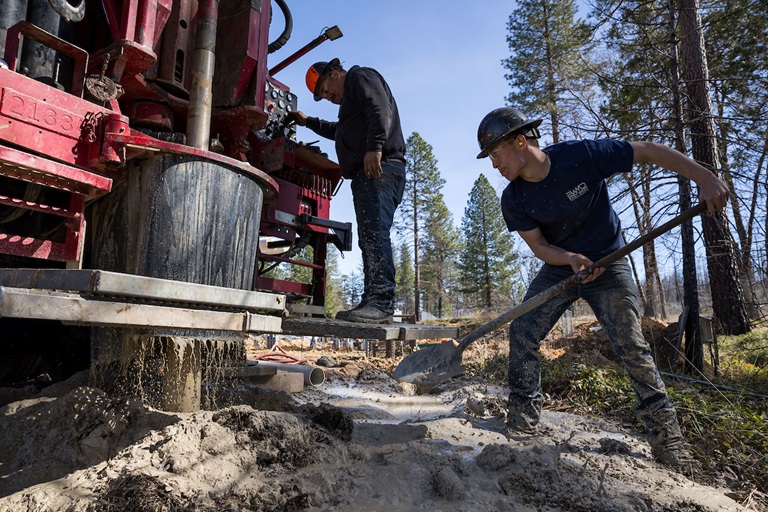One Year Later: State-Led Drought Task Force Releases Inaugural Report Laying the Groundwork on How to Improve Drought Resilience for California
Big’N & Son Drilling out of Oroville works to install a new water supply well at Berry Creek School in Butte County. The school received approximately $894,000 from DWR’s Small Community Drought Relief Program to help rehabilitate its water supply and distribution system after being destroyed during the 2020 Bear Fire. Photo taken Feb. 27, 2024.
Even though California’s April Snow Survey marked a second consecutive year of above average snowpack and precipitation, the State is continuing to take proactive steps to plan for future dry conditions as shifts between abundant wet years and extreme drought become more frequent. The Department of Water Resources (DWR) has published an inaugural report detailing the ongoing, proactive planning among state agencies and local partners to prepare for the eventual return to dry conditions.
The report documents the first year of DWR’s Drought Resilience Interagency and Partners (DRIP) Collaborative, a statewide drought task force launched in 2023 that is comprised of 26 members from different state agencies and various water user groups. The DRIP Collaborative develops actionable recommendations on coordinating proactive planning, emergency response, and post-drought management to improve water resilience by providing data and resources to small water suppliers and rural communities needed to address future water shortages.
The DRIP Collaborative brings together a diverse array of voices, including state agencies, county and tribal governments, community groups, and more. By uniting these perspectives, it is creating a space where everyone can work together to develop recommendations for building drought resilience across California while accomplishing new responsibilities set by Senate Bill 552.
“In California, our new normal is characterized by unprecedented weather events intensified by climate change, whether that’s extreme dry conditions or historic precipitation,” said DWR Director Karla Nemeth. “While we celebrate California’s recent wet weather, it’s critical that we also use this time to prepare our response to future dry conditions that considers all communities and the additional vulnerabilities they might face.”
In the past year, the DRIP Collaborative has identified three topics to focus on:
- Drought Definition and Narrative
- Drought-Relevant Data
- Drought Preparedness for Domestic Wells
The Collaborative’s discussions focused on the need for drought indicators and metrics to better represent what’s really happening in local communities, bridging data gaps, and supporting the vulnerabilities of disadvantaged communities and those who rely on domestic wells. Suggested potential action items to achieve these recommendations include updating the existing language of SB 552 to enhance its implementation, creating a community well monitoring program, preparing a suite of drought-related case studies, and outlining roles and responsibilities to develop drinking water solutions for existing domestic wells. Moving forward this year, the DRIP Collaborative plans to expand its proactive planning and coordination for drought resilience through the development of other recommendations related to climate change adaptation, nature-based solutions, and ecosystem impact reduction.
The next DRIP Collaborative meeting will take place on April 26 from 10 a.m. to 5 p.m. Interested participants are encouraged to join in person or virtually to listen in and provide public comments. The agenda will include a review and discussion of the first round of DRIP Collaborative recommendations. For more information and to access recordings of previous DRIP Collaborative meetings, visit the DRIP Collaborative's webpage.
